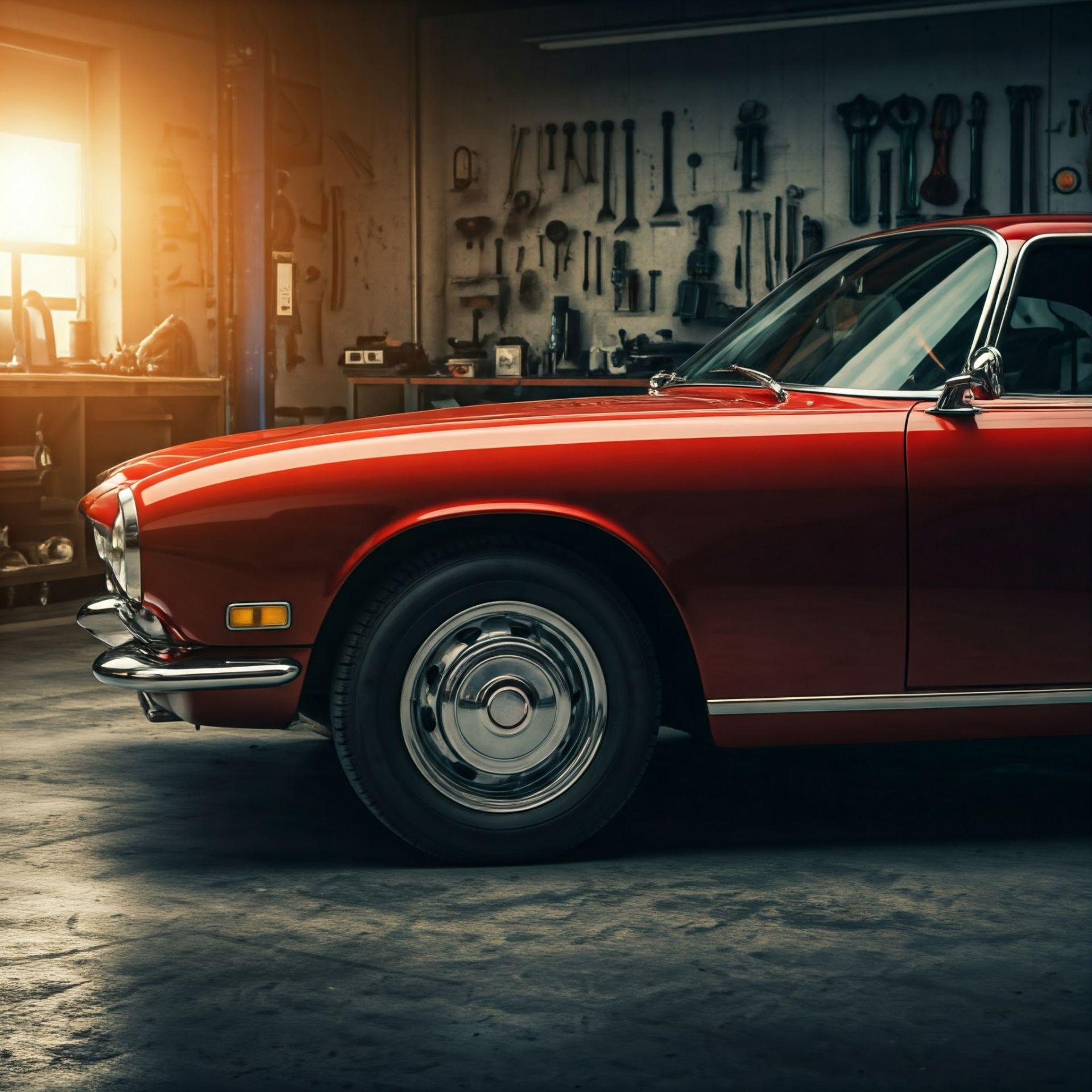Oldtimer and youngtimer: all about rules and taxes
What is a vintage car?
A car is officially considered an oldtimer in the Netherlands if it is at least 40 years old. The age is calculated from the date of first admission (‘DET’ in rdw jargon), which can be found on your registration certificate. It does not matter if it was imported and registered in the Netherlands only last year.
Tax Benefit
Of course, you buy a vintage or youngtimer primarily for fun. Even more fun: in some cases there are tax advantages for oldtimers, such as exemption from motor vehicle tax (MRB). You usually get this automatically, except if it is a truck or bus. Then you can still apply for exemption, but if you get it, you may not use your truck or bus as a business. The vehicle must be in a person’s name and may only be used privately. As soon as you start using your vintage car for business purposes, you will be required to pay motor vehicle taxes.
The terms vintage car and classic car are often used interchangeably, but the latter does not appear on the central government website.
Transitional regulation
The regulations were changed in 2013. Until Dec. 31, 2013, the “age limit” for vintage cars was 25 years old, but it was thus suddenly increased by 15 years to 40 years on Jan. 1, 2014. As a result, cars that were then 26 to 40 years old were no longer eligible for the tax benefit for vintage cars. There has been a transitional arrangement for this since then. The Tax Office has developed a calculator tool that you can use to check whether your car falls under this transitional arrangement.
If your vintage car falls into this category, you’ll pay 25 percent of the tax rate, provided you don’t drive your vintage car on public roads in December, January and February. If you own a bus or truck, you may also qualify for this arrangement. Even then, you may not drive those vehicles on business.
Vintage car insurance
Special insurance policies are offered for vintage cars. The difference with regular car insurance is that vintage car insurance is often based on the car’s assessed value rather than its daily value. Partly for this reason, different insurance terms apply. For example, the insurer may stipulate that you cannot drive the vintage car all year, that you can only use your vintage car recreationally, and that you can only drive a certain number of miles per year. Then it may be necessary to have a “daily” car next to it.
So what is a youngtimer?
Youngtimer is not an official term, but “youngtimer” refers to cars that are between 15 and 40 years old – the term comes from historic motorsports. In practice, they are cars too old for the regular used car trade, but interesting enough to “keep” and too young to qualify as vintage. Even to some youngtimers, the term “classic” can already apply. Youngtimers are actually cars with a classic touch, but without the limitations of a vintage car.
Youngtimer and business use
Youngtimers can be attractive to business drivers because of the lower additional tax liability. The fiscal addition for business youngtimers is calculated on the daily value instead of the usually much higher list value of the car. Other tax advantages for business owners who drive a youngtimer is the ability to claim maintenance and fuel costs as a tax deduction. Thus youngtimers combine a more favorable financial picture with character and appearance. For more detailed information, visit our youngtimer page and the ANWB website.
Youngtimer insurance
Insurers offer special packages for youngtimers. If you use them, be sure to have the appraised value recorded to avoid problems in case of unexpected damage. Such youngtimer insurance is usually more economical than insurance for a new car because the value of the car is much lower. Such insurances offer tailor-made coverage depending on the value, use and insurance conditions.
Youngtimer and road tax
Oldtimers are exempt from road tax (mrb). For youngtimers, this exemption does not apply, but perhaps you can take advantage of the transitional arrangement that we have discussed for oldtimers. Normally, the owner of a youngtimer pays the normal rate of motor vehicle tax depending on its weight, fuel and the province in which it lives.
MOT
On the website of the RDW-the former National Road Administration-you can read when and how often you must have your car inspected. Cars eight years old and older must be inspected annually, diesels every year. If your youngtimer is thirty years old, it has to go for the APK every other year and if it is older than fifty years, it is exempt from the APK inspection obligation.
Access to environmental zones
More and more environmental zones are emerging. Old-timer drivers – even those with a diesel engine – do not have to take this into account. But drivers of a less than 40-year-old car with a diesel engine do. Many cities have stricter rules for old diesel cars in these zones, but some cities also offer an exemption for old-timers with a historic license plate. This varies by municipality, so check the rules on the central government website.
Can a classic car replace a new car?
While a vintage or youngtimer has a lot of charm, it is important to ask yourself whether it can be a practical replacement for a new or young car. Oldtimers are less designed for use in today’s traffic and may have higher maintenance costs. Furthermore, they lack modern safety features such as airbags and ABS. They are therefore more suitable as a hobby car than as a daily means of transportation.
A youngtimer is a lot younger than a vintage car and thus more suitable for frequent use, provided it is well maintained. Many models offer comfort, performance and even modern amenities such as air conditioning. For business drivers, the tax advantages can make a youngtimer attractive.
Purchasing considerations
When buying a vintage or youngtimer, good preparation is essential. Check thoroughly the technical condition of the car and have a purchase inspection done. Also look at the availability of parts and choose a model whose maintenance costs are within your budget.
Some vintage and youngtimers increase in value. If this is important to you, you have to assess whether that increase in value outweighs the inconveniences and the extra (maintenance and repair) costs of your car if you want to eventually earn money from it. Remember: old cars are mostly fun to own, drive and stand out from the gray lease cars.

